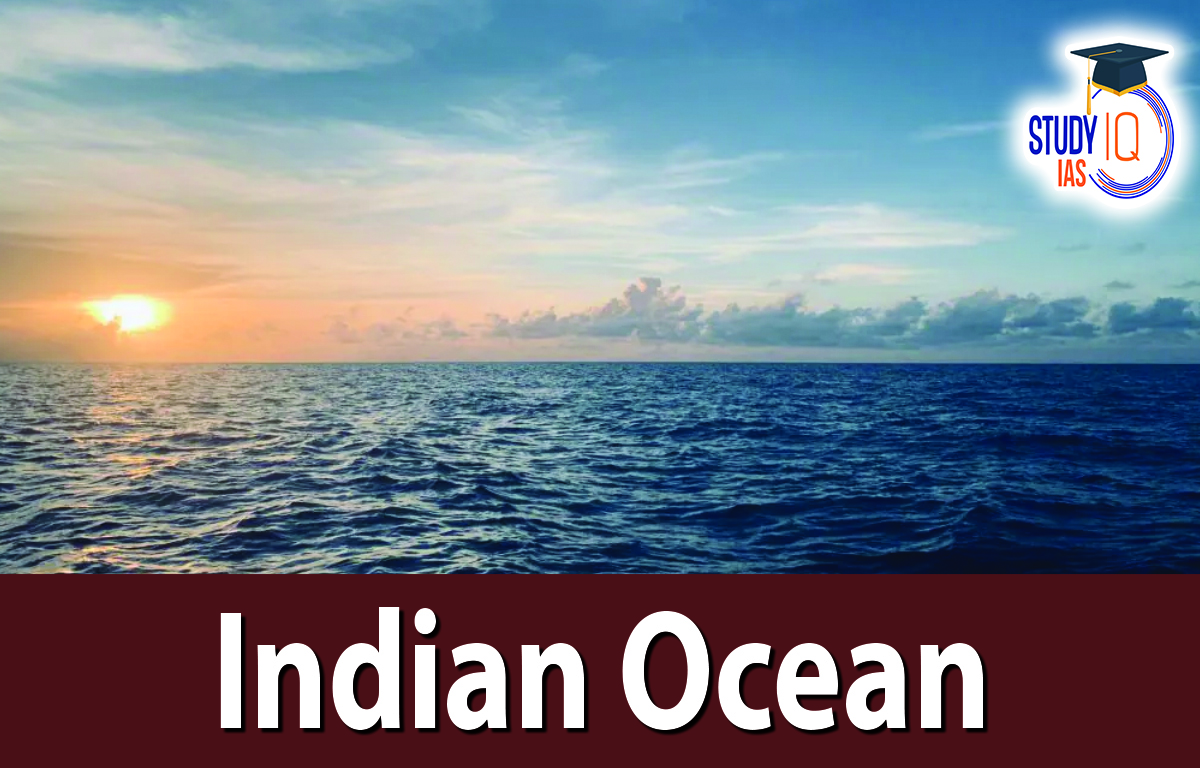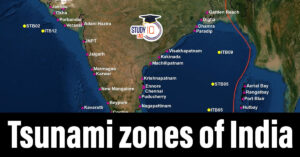Table of Contents
Indian Ocean
The Indian Ocean is the third-largest ocean in the world covering 20% of the Earth’s water surface. It is named after the Indian subcontinent and is bordered by Southern Asia to the north, the Arabian Peninsula and Africa to the west, the Malay Peninsula, the Sunda Islands, and Australia to the east, and the Southern Ocean to the south.
The Indian Ocean is separated from the Pacific Ocean by the 147° east meridian and from the Atlantic Ocean by the 20° east meridian, which extends south from Cape Agulhas. The northernmost point of the Indian Ocean is the Persian Gulf, located at about 30° north latitude. The ocean covers an area of 73,556,000 square kilometers (28,400,000 square miles) and includes the Red Sea and the Persian Gulf. It is nearly 10,000 kilometers (6,200 miles) wide between the southernmost points of Africa and Australia.
The ocean has an estimated volume of 292,131,000 cubic kilometers (70,086,000 cubic miles). Small islands are scattered along the edges of the continents. Madagascar, the fourth-largest island in the world, is an island nation along with Comoros, Seychelles, Maldives, Mauritius, and Sri Lanka. Indonesia also borders the Indian Ocean.
The Indian Ocean has been an important route between Asia and Africa, leading to conflicts over control. However, due to its vast size, no single country dominated it until the early 1800s when Britain controlled most of the surrounding territories. Since World War II, India and Australia have been the main powers in the region.
| Facts about Indian Ocean |
|
Read about: Coral Reef
Indian Ocean Islands
Many of the smallest nations and one of the largest island nations can be found among the diverse collection of islands in the Indian Ocean (Madagascar). Some islands are isolated, while others are near continents. There are some Indian Ocean Island like, Madagascar is the biggest island in the Indian Ocean famous for its unique wildlife. South of India is Sri Lanka known for its rich culture and tea plantations. The Maldives is a tropical paradise with over 1000 coral islands, beautiful beaches, and luxury resorts. Seychelles has 115 islands known for its stunning beaches and nature reserves. Mauritius has a multicultural population, great beaches, and mountains. The Comoros islands, between Madagascar and Mozambique, have a diverse culture. The Andaman and Nicobar Islands in India are famous for their clear waters and indigenous tribes. Lakshadweep, also part of India, is known for its coral reefs and marine life.
Read about: Mountains of India
Eastern Indian Ocean Islands
| Eastern Indian Ocean Island |
|
Western Indian Ocean Islands
| Western indian Ocean Islands |
|
Southern Indian Ocean Islands
| Southern Indian Ocean Isalnds |
|
Northern Indian Ocean Islands
| Northern Indian Ocean Islands |
|
Uninhabited or Restricted Islands
| Uninhabited or Restricted Islands |
|
Read about: Wetlands in India
Indian Ocean Deepest Point
The deepest spot in the Indian Ocean is the Java Trench, which is 7187 meters deep. In the Southern Ocean, the deepest point is the South Sandwich Trench at 7432 meters.
Read about: Biodiversity in India
Indian Ocean Largest Island
Madagascar
Madagascar is the largest island in the Indian Ocean covers about 226658 square miles. It is the fourth largest island in the world, after Borneo, New Guinea, and Greenland. Located 250 miles off the eastern coast of southern Africa, Madagascar is a sovereign nation with around 26 million people. It is a member of both the African Union and the United Nations. Madagascar was a French colony until it gained independence on 26 June 1960.
Read about: Himalayan Ranges
Why Indian Ocean is named after India?
The Indian Ocean is named after India because of its important location at the ocean’s head and its long coastline, which is the longest of any country along the Indian Ocean rim.
Read about: Monsoon in India


 Vizhinjam International Seaport Project,...
Vizhinjam International Seaport Project,...
 Tsunami Zones of India, Causes and Subdu...
Tsunami Zones of India, Causes and Subdu...
 Places in News for UPSC 2025 for Prelims...
Places in News for UPSC 2025 for Prelims...





















